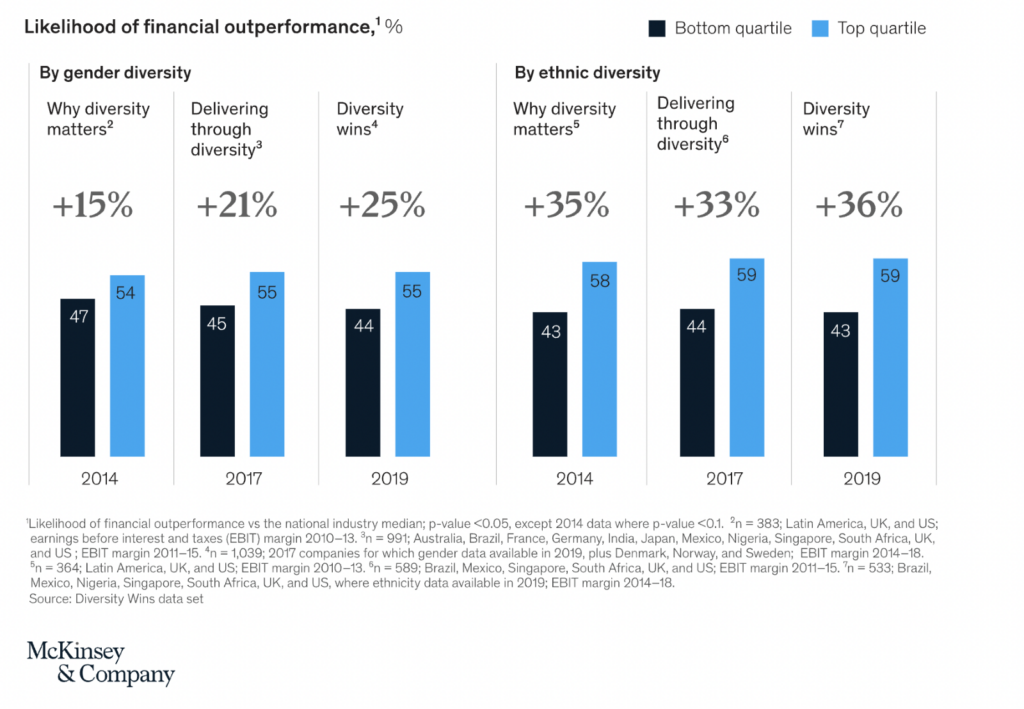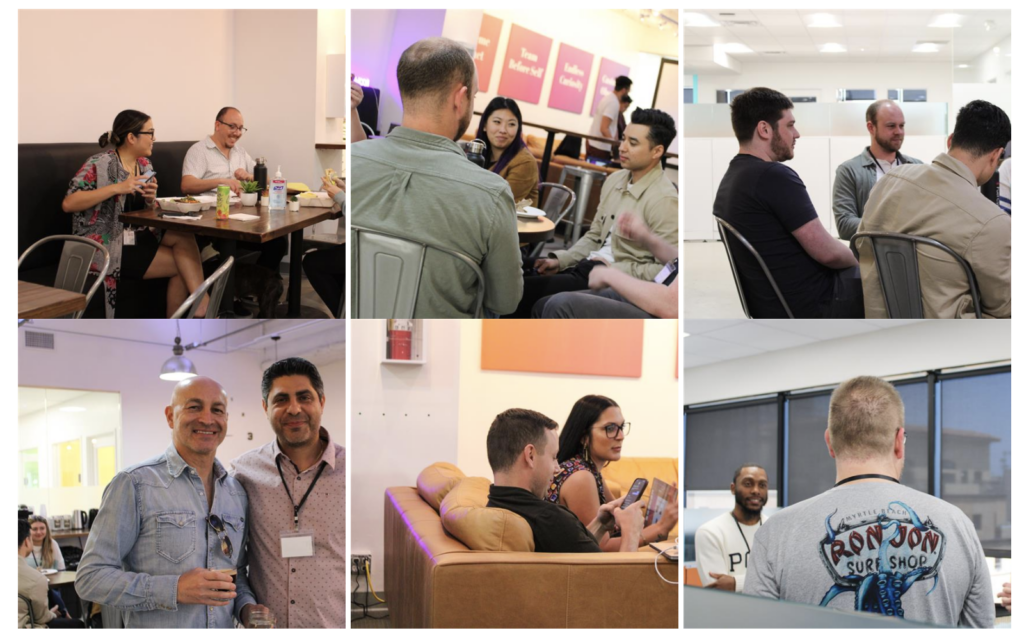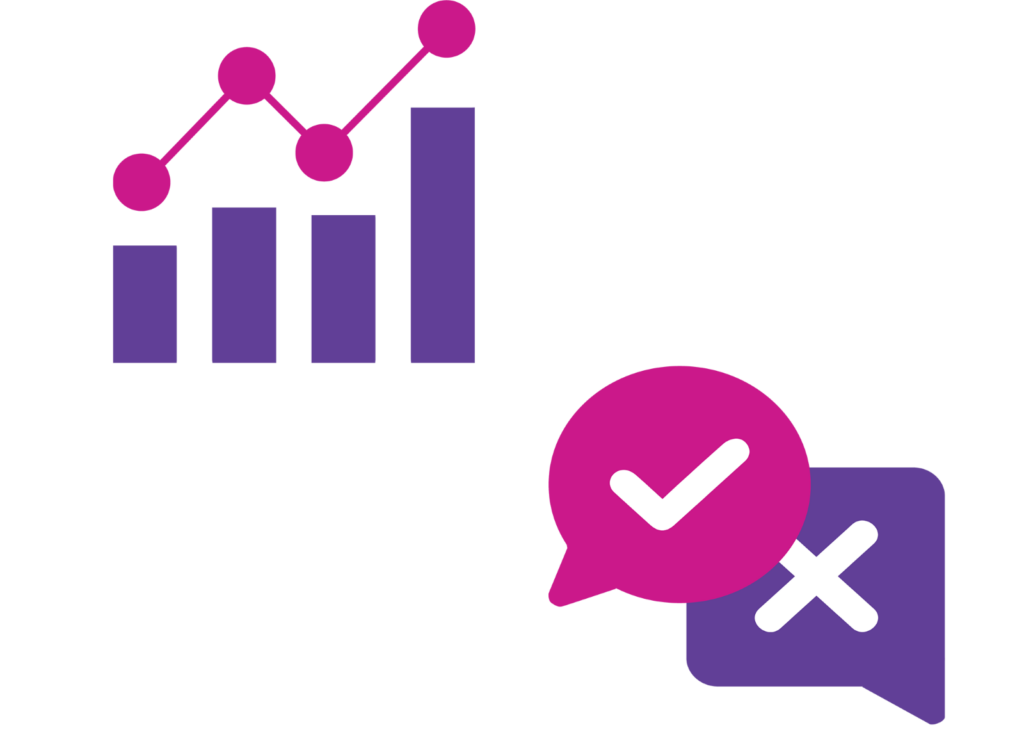Introduction—Who Plays Video Games?
What does a gamer look like– are they more likely to wear pajamas or a business suit? What jobs do they have, and how do they socialize with friends?
Perhaps you just imagined a teenager, probably male, chilling on the couch.
Or maybe a Twitch streamer with pastel-pink hair, cat-eared headphones, and a sick RGB PC setup?
Both are possible examples of who might be a gamer, but the possibilities are endless.
I’m a gamer, and there’s a good chance that you are, too! The Entertainment Software Association (ESA) reports that “nearly 221 million Americans play video games” in their 2021 United States of Play survey. In fact, 46% of US gamers are women, 16% are LGBT+, and 31% have a disability. 20% are Latino, 15% are Black, and 5% are Asian American. More people than ever before have joined the hobby. Part of this is due to the Covid-19 pandemic, when other forms of entertainment like movies, concerts, and sports games were cancelled. However, as pandemic restrictions roll back and entertainment venues reopen, 90% of players are predicted to continue with video games.
There are several ways to look at diversity, equity, and inclusion initiatives in gaming. This article will focus on the players and the hobby, with a summary of how DE&I is imperative for business success. Then, we’ll discuss how market research solutions can help game developers and publishers launch titles where everyone is welcome.

What Is Diversity, Equity, and Inclusion?
First, let’s recap what DE&I means. Diversity, equity, and inclusion, or DE&I, is an umbrella term that includes social, ethical, and corporate programs to create a more equal world. Individually, the terms are defined as:
Diversity: “all the ways that people are different, including the different characteristics that make one group or individual different from another.” In this usage, examples of diversity could be race, ethnicity, age, gender, sexual orientation, religion, physical ability, socioeconomic status, and more.
Equity: “the fair treatment, access, equality of opportunity and advancement for everyone while also attempting to identify and remove the barriers that have prevented some groups from fully participating.” Though the word sounds similar to equality, equity “acknowledges that not all people or communities are starting from the same place due to historic and current systems of oppression”. Implementing equity in the workplace is situational, as what is fair treatment and removal of barriers varies for each individual. Pursuing equity and working towards equality in the gaming hobby are both important for a healthy workforce and happy customers.
A key part of implementing diversity initiatives is recognizing and respecting differences while working for the fair treatment of everyone. We’re all human, we’re all different, and it’s beautiful!
Why This Is Important
Fostering the gaming hobby to be diverse, equitable, and inclusive is the right thing to do. Everyone has the right to rest and leisure. Incorporating DE&I efforts is also vital for businesses to be financially valuable. Sandhya Devanathan, Asia-Pacific VP of global gaming at Meta, explains that “it’s not just a social imperative, it’s also an economic imperative.” Video games are a billion-dollar industry where competition is fierce. DE&I initiatives prove key to increasing a game publisher’s chances of success. Research by McKinsey found that “companies with the most ethnically diverse executive teams are 33 percent more likely to outperform their competitors on profitability.” Furthermore, a 2018 Deloitte report concluded that companies with an inclusive culture are 2 times more likely to meet or exceed financial targets and are 8 times more likely to achieve better business outcomes. McKinsey again concurred similar findings about the correlation between diversity and profitability in their 2020 report using 2019 data, summarized in the image below:

A video game that fails to connect with players by not reflecting the principles of DE&I is leaving money on the table and putting their profitability at risk. In gaming slang, that’s a lot of loot for companies to cash in on. But what does that look like for players?
Video games are for everyone, and there is a game for every interest and skill level. In 2021, US game sales reached a record-breaking 60.4 billion USD. So far, in 2022, the top selling games are Elden Ring, Lego Star Wars: The Skywalker Saga, Madden NFL 23, Pokémon Legends: Arceus, and Horizon II: Forbidden West. This line-up includes all-ages darlings as well as mature-rated masterpieces. Elden Ring alone has sold nearly 17 million copies and counting. Lego Star Wars: The Skywalker Saga is the best-selling Lego video game to date with 3.2 million copies sold globally in just two weeks.

So, what does DE&I in the gaming hobby look like? Here are two use cases.
Use Case: Accessible Gaming for People with Disabilities
Accessibility is an important part of DE&I initiatives. In this context, accessibility means “the design of products, devices, services, vehicles, or environments [to] be usable by people with disabilities. The concept focuses on enabling access for people with disabilities, or enabling access through the use of assistive technology; however, research and development in accessibility brings benefits to everyone.” Disabilities can be physical or mental; visible or invisible. A disability could also be chronic pain or a long-term, severe illness like cancer.
As stated earlier, 31% of gamers have a disability. For gamers with physical disabilities, they can purchase adaptive controllers. Some gamers with severe mobility disabilities even play with a joystick using their mouths. The charity AbleGamers promotes video games to help disabled people counter loneliness, as well as raising money for adaptive gaming equipment. A list of accessibility considerations by the International Game Developers Association (IGDA) Game Accessibility Special Interest Group suggests accessible menus, keyboard navigation for all controls, and audio GPS.
There are countless stories of games helping people get through difficult times in their lives by helping them find new friends, reconnect with family, and give them joy. The US Department of Veteran’s Affairs partnered with Microsoft Xbox to distribute adaptive controllers to VA rehab centers throughout the country in Fall 2019. This unique co-op is part of a larger initiative to reduce veteran suicide rates and provide coping mechanisms for people with PTSD or chronic pain. While speaking to the press in 2019, the Chief of Staff of the VA said: “What we’re seeing as one of the indicators of why veterans commit suicide is that isolation and loss of belonging, that loss of camaraderie. But if you’re able to use your Xbox and still stay connected with your fellow Navy sailors, I mean, that’s huge.”

Game designers should consider making games accessible for people with colorblindness, partial blindness, or deafness. This can be through functions to support remapping keys, automatic subtitles, avoiding a red/green color scheme, and various difficulty modes. For instance, the 2018 game Celeste included an assist mode that let players “adjust speed, become invincible, and skip levels entirely” without sacrificing the story. Game designers should also include adaptations for people who are missing limbs or have limited motor control. Studios can hire accessibility consultants, and include disabled people in their market research communities.
In addition, game developers can benefit from conducting qualitative research with disabled people. With qualitative research, you can learn what types of representation is most important to your customers. Would players like character customizations to include wheelchairs? Do they want a toggle to turn off on-screen gore effects during combat? Answers will vary, and it’s important not to assume that society at large knows what is best for underrepresented people. With qualitative market research, avoid guesswork and listen to your customers’ insights on what they love in your game.
Finally, there is a growing legal imperative to make video games accessible. The Federal Communications Commission (FCC) ruled that video games developed and released after 2019 are required to comply with the 21st Century Communications and Video Accessibility Act (CVAA). As video games are increasingly used as educational tools in schools, they may become subject to Section 508 of the Rehabilitation Act, thus, requiring schools that receive federal funding to make their electronic and information technology services accessible.
Use Case: Aging Gamers and Multigenerational Gaming
Fun has no age limit! Though once thought to be for kids only, that is no longer the case with video games. The average age of video game fans is in the 30s, and that age is predicted to increase. People who were children in the days of Atari and Commodore 64 are now middle aged. Thankfully, gaming can bring together fans from different generations and keep us all young at heart.
Consider “Skyrim Grandma”, Shirley Curry. Ms. Curry is a YouTube streamer who posts videos of her The Elder Scrolls V: Skyrim playthroughs. She stands out among gaming YouTubers because she is 86 years old, lives in a retirement community, and addresses her viewers of all ages with “hey, grandkids!”. However, she isn’t alone as a gaming Grandma, as an AARP study found that 40% of people older than 50 played video games once a month.
Game developers should consider individuals with cognitive changes, slower reflexes, and reduced vision when designing for aging gamers. For example, they can include accommodations for someone who’s had a stroke or is bed-bound.
In addition, game publishers can release ports or emulator-compatible versions of older games, like how the Nintendo Switch Online service offers titles from NES, SNES, and N64 catalogs. This allows gamers to enjoy games from decades past while sharing them with their friends and family today. Also, older gamers are increasingly playing casual video games like puzzles, connect-3s, and seek-and-finds on their mobile devices.

The Fuel Cycle Way
At Fuel Cycle, we’re proud to work with employees and customers from all over the world. Our teams are made up of people from many faiths and cultural backgrounds, and we are proud of our coworkers who are part of the LGBT+ community. We stand in solidarity with each of our coworkers as we strive to make Earth a safe place for all people. It’s our goal to reflect these ideals in our solutions and with our customer interactions.

Fuel Cycle Community is a market research insights platform that helps you find your people and talk to them. We’ll be covering how: FC community, FC Live, FCX, and FC Ignition do this to support video game companies.
Find Your People with FC Community and FC Live
One way to increase representation in gaming is to include people from diverse backgrounds in your market research community. 66% of customers say they expect companies to understand their needs, and an online community is an excellent way to do just that. Ask community members what features would help make gameplay more welcoming. Listen to their requests for accommodations.
Fuel Cycle Community is a market research insights platform, with functionality including Live Chat, SMS Campaigns, Panels, and Grouping. Your data collection, analysis, visualization, and sharing functionality all live inside your community; so, the latest survey results can be illustrated in dynamic outputs like charts and dashboards, automatically. Fuel Cycle Community supports qualitative and quantitative research.
Market research online communities offer companies an on-demand pool of consumers from which to gather feedback. Feedback can help perfect new product features or even spur ideas for entirely new prototypes. Community members can participate in in-home usage testing, customer journey maps, accessibility evaluations, and surveys.
Accessibility Evaluations
You can use FC Community features to conduct a special type of UX research called an accessibility evaluation. An accessibility evaluation is a systematic way to collect and analyze data about how people use a product or service. It’s often used by researchers to study how well the design of a product or service meets the needs of people with disabilities. There are many different methods that can be used to conduct an accessibility evaluation, but they all have some things in common:
They involve collecting data on inclusion multiple perspectives:
- The perspective of users with disabilities may have different needs than other users. For example, people who are blind may need audio descriptions for images or video content, while people who are deaf may need captions for audio content.
- The perspective of developers, designers, and others who build products and services (including websites). These people need to understand what makes something accessible for people with disabilities so that they can make changes in their designs.

FC Live is a video interview solution helping researchers through IDIs and focus groups. This solution lets you conduct video interviews from anywhere with a mobile device. People with disabilities may not be able to travel to an in-person product demo or focus group, so FC Live helps you reach test groups that would otherwise be excluded. Virtual interviews are a great way to get consumer insights from online community members one on one. In-depth interviews utilize an open-ended, discovery-oriented data collection method where the researcher can more deeply explore a respondent’s feedback and thought processes. With tools like FC Live from Fuel Cycle, it’s possible to set up a controlled study with a hidden observer. Stakeholders are able to watch participants interact with products while remaining undetected by participants. These interviews often produce some of the richest data in market research and are invaluable to virtually all organization departments.
Press X to Join with FC Exchange
FC Exchange is where we’ve partnered with 39 apps (and counting!). DE&I in games starts with designing accessible games; and FC Exchange supports usability and design testing with apps like FCX Marvel. Marvel enables researchers to include interactive prototypes that mimic real-life customer journeys and user experiences. Reach underrepresented groups by curating a diverse MROC with FCX Suzy. FCX Suzy connects you with any target audience to gather real-time feedback. You can talk to your current customers in parallel with non-customers, and any other segment of individuals. FCX UserZoom and FCX UserTesting provide best in class user experience testing, benchmarking, and interviewing.
Be the Spark of Change with FC Ignition
Ignition is a new solution suite from Fuel Cycle intended to accelerate customer and employee insights by simplifying and automating research processes as much as possible. Ignition enables users to rapidly innovate, assess digital advertising effectiveness, and develop deeper connections with customers and employees with a robust set of tools accessible to anyone. Usability and accessibility testing are vital to understanding how your products work. Are you a UX visionary that’s fired up about delighting customers with cutting edge design? Through the Usability Benchmarking app, measure how your UX stacks up against industry standards using the System Usability Scale. Use Concept/Creative Screening to learn what features are most important to your audience across key metrics. With Retention and Conversion Analysis, identify the metrics and attributes that most impact a key attitude or behavior.

All Players Welcome
Video games are a vital element in the pursuit of happiness for players all over the world. Whether you’ve been gaming for as long as you can remember, or you first picked up a controller yesterday, you are welcome here. Contact a Fuel Cycle representative to discover the right market research solution for your business.
Interested in learning more about how Fuel Cycle helps enlighten your DE&I initiatives? Download our eBook and check out our blogs, Women in STEM and Market Research and Six Colors, Five Letters: Pride. Have time for one more level? Read our blog, Achievement Unlocked: How Market Research Takes GaaS to the Next Level.



